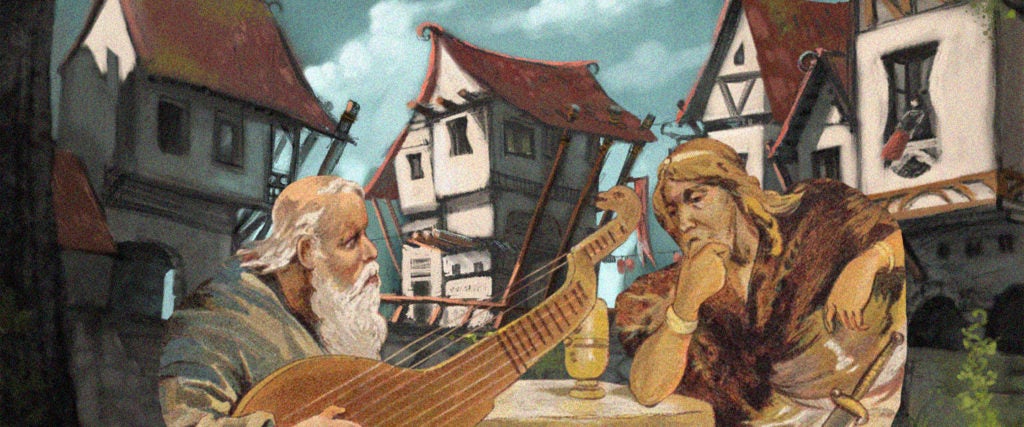Sharpen your swords, string your bows and make ready all your instruments of death! Today, countless savage beasts require slaying. And by instruments of death, I mean your keyboard and computer. And by savage beasts, I mean unremarkable Zoom meetings and dumb projects.
Alas, reality can be tiresome at times. But aided by a strong imagination and hours of fantasy tavern music on YouTube, your dreary workdays can become enchanting adventures.
Chances are, these tunes remind you of role-playing video games and movies that feature wizards, which is no accident. “The playlist I made is composed of soundtracks from various video games as well as ‘real’ songs, most of which were inspired by medieval Northern European influence,” says Celestial Draconis, who uploaded the above compilation, which currently has more than four million views.
• Read Next: Deep Focus Music: Are Whale Sounds the New Binaural Beats?
But even the “real” songs in many of these fantasy bard music compilations on YouTube are far from authentic. “Fantasy bard and tavern music made today is rarely ever historically accurate, as many use instruments like the piano, which were scarce in music made in the 14th century,” Draconis explains. “The lyrics today are also written in modern English that sounds phonetically different.” Furthermore, many songs in these compilations feature Elvish and other fantastical languages conceived by the likes of J.R.R. Tolkien, who was born centuries after the Medieval Period.
That said, Draconis explains that many fantasy tavern music compilations on YouTube make use of Dorian mode, a musical scale that served as a model for medieval European chant theorists: “The ones made today replicate this blueprint, which is why they sound ‘medieval’ in the first place.” So, these compilations may at least have a similar vibe to some real medieval music.
But when we talk about authentic medieval tunes, Draconis points out an important distinction: “Those written by professionals for the nobility, and folk music written by and for commoners and peasants. The ones you hear today will definitely lean more toward the latter, where they sound more simplistic in nature, rowdy even, and more suited for festivals, dancing and taverns, obviously. The former is generally more church-like, filled with harmonies, chants and organs.” (For an example of such chanting, you can turn to the Halo theme song.)
Now, again, all of these compilations are simply guesses at what medieval music may have sounded like, as we only have so much to go on. I asked Daniel Leech-Wilkinson, author of The Modern Invention of Medieval Music, if any of them sounded convincing to him, and he replied, “The answers to your questions are no — listen to recordings by The Orlando Consort and Gothic Voices for good examples of the closest we can get now, which is probably not very close, to the sound of genuine medieval music.” (The YouTube compilations slap much harder, in my honest opinion.)
Chances are, what we know to be “real” medieval chants were simply too abnormal compared to the linear and produced music we listen to today, so Hollywood and YouTube compilation creators likely took liberties to come up with the fantasy bard music we now know and love. Still, medieval music was likely more diverse than we know, and there are medieval transcripts out there that sound less like chanting and more like something to slam grog to. For example, estampie, a medieval dance and musical form popular in the 13th and 14th centuries:
Real or not, fantasy tavern music compilations on YouTube, like the one Draconis made, garner millions of views by helping listeners add more adventure to their lives. “I made it for myself and some friends so we could have a personalized playlist to listen to for studying, and I guess it picked up some traffic,” says Draconis. “Quarantine is a factor, what with everyone doing all their work online these days. The YouTube algorithm works in mysterious ways, I suppose. Not gonna complain, though.”

